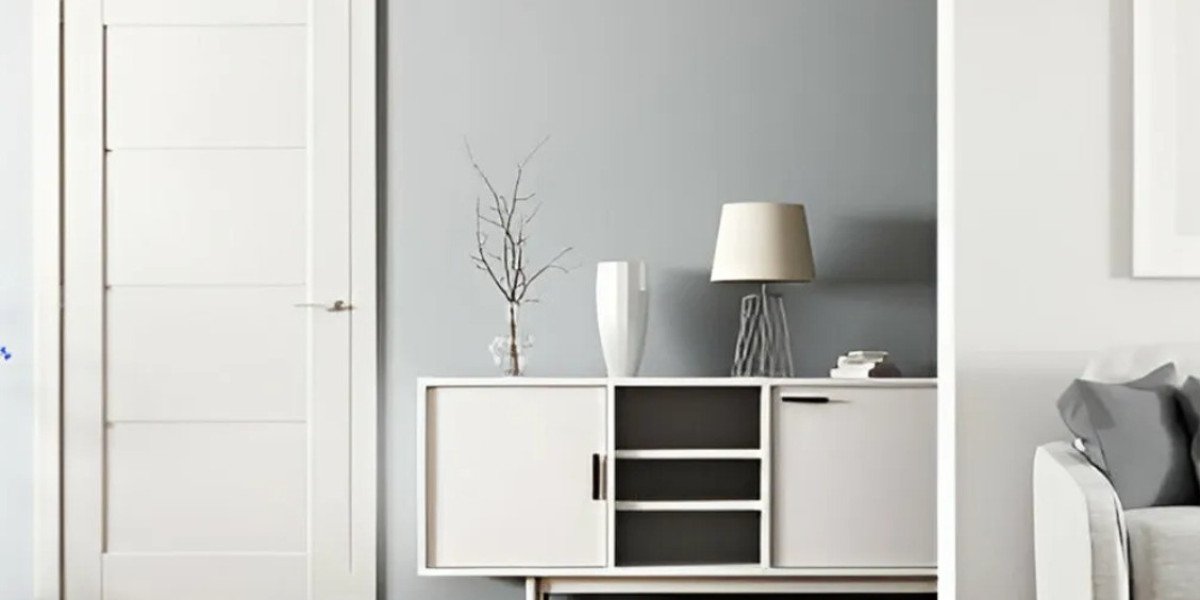In the grand tapestry of home design and renovation, interior doors are often the unsung heroes. They are the quiet guardians of our privacy, the subtle directors of foot traffic, and the powerful influencers of a home's aesthetic and acoustic atmosphere. For Canadian homeowners embarking on a renovation or new build, the choice between a simple slab door and a prehung door unit is one of the most critical decisions you'll make. While the former may seem like a cost-effective shortcut, the latter is almost universally the smarter, more efficient, and more professional choice for a lasting result.
This guide will delve into the world of interior doors in Canada, with a special focus on why the prehung door is the champion of modern installation.
Part 1: Understanding the Core Concepts - Interior Doors vs. Prehung Doors
First, let's clarify the terminology, as these terms are often used interchangeably but mean very different things.
What is an Interior Door?
An interior doors refers to the door slab itself—the flat, rectangular panel that swings, slides, or folds to open and close a doorway. It's just the door, nothing more. When you buy a slab door, you are purchasing only this component. This is typically the choice for a very specific scenario: replacing an existing door in an existing, perfectly square, and undamaged frame. Even then, it often requires significant carpentry skill to ensure a proper fit.
What is a Prehung Door?
A prehung door is a complete, factory-assembled unit. It includes:
The Door Slab: The actual door, already sized and prepped for hardware.
The Frame (Jamb): The surrounding structure, consisting of two side jambs and a head jamb.
The Hinges: Already mortised (recessed) into both the door and the jamb, with the hinge pins in place.
The Door Stop: The moulding attached to the jamb that the door closes against.
In essence, a prehung door is a ready-to-install system. You remove the old door and frame entirely, and install this new, perfectly aligned unit directly into the rough opening of your wall.
Part 2: The Unbeatable Case for Prehung Doors in the Canadian Home
While a slab door has its niche, the advantages of choosing a prehung door are overwhelming for the vast majority of projects.
1. Ease and Speed of Installation
This is the single biggest benefit. Installing a slab door into an existing frame is a finicky, time-consuming process that requires precision to hinge mortising, ensuring even gaps, and preventing binding. A prehung door eliminates this headache. The hard work—aligning the hinges, setting the gaps—is done at the factory with machine precision. For a competent DIYer or a professional, installing a prehung door is a relatively straightforward process of levelling, shimming, and securing the frame. What might take hours with a slab door can often be accomplished in under an hour with a prehung unit.
2. Superior Fit and Performance
Canadian homes are not static; they live and breathe with our dramatic seasons. The wood in your home expands and contracts with changes in humidity and temperature. An old, warped door frame can lead to doors that stick in the humid summer or drafty gaps in the dry winter.
A prehung door gives you a brand-new, perfectly square starting point. The factory-set clearances ensure smooth operation year-round. This is crucial for maintaining energy efficiency and comfort, especially in a climate that demands well-sealed homes.
3. A Fresh, Professional Finish
Over time, door frames take a beating—from vacuum cleaners, moving furniture, and general wear and tear. Simply replacing the slab door leaves behind a scuffed, painted-over, and potentially damaged frame. Installing a new prehung unit allows you to start fresh. You can paint or stain the new door and its pristine frame together, ensuring a flawless, cohesive, and professional-looking result that truly refreshes a room.
4. Addressing Structural Shifts
If your home has settled over time (a common occurrence), your existing door frames may no longer be square. Trying to fit a new, perfectly rectangular slab door into a trapezoidal frame is a recipe for frustration and failure. A prehung door system allows you to correct for this. During installation, you can shim the new, square frame to fit the slightly out-of-square rough opening, ensuring the door itself operates perfectly.
Part 3: Navigating the Canadian Market for Prehung Interior Doors
When you decide to go the prehung route, you'll find a wealth of options at Canadian building supply stores like Home Depot, Lowe’s, Rona, Kent Building Supplies, and local lumberyards.
Material Matters:
MDF (Medium-Density Fibreboard): The most popular and affordable choice. MDF is incredibly stable, resistant to warping, and provides a smooth, perfect surface for paint. It's ideal for most interior applications in Canada's variable climate.
Solid Wood: Offers superior sound insulation, a classic, heavy feel, and can be beautifully stained to show off the wood grain. Species like pine, oak, and maple are common. However, solid wood is more expensive and can be susceptible to minor expansion and contraction.
Hollow Core: Constructed with a thin veneer over a honeycombed cardboard interior. Very lightweight and budget-friendly, but offer minimal sound insulation and can feel less substantial.
Solid Core: Features a composite wood core beneath a veneer. They offer the best of both worlds: the stability and paintability of MDF with the weight, sound-dampening qualities, and fire-resistance (in some models) closer to a solid wood door.
Style and Design:
Your door is a key design element. The Canadian market offers everything from:
Classic Panel Doors: Featuring two to six raised or flat panels, these are timeless and work in everything from traditional to farmhouse styles.
Modern Slab Doors: Clean, flat surfaces with minimal hardware, perfect for contemporary and minimalist homes.
French Doors: With glass panes, they are perfect for letting light flow between rooms, such as between a living room and a den.
Barn Doors: A hugely popular style for saving space, though these are typically sold as separate sliding kits, not prehung units.
A Crucial Canadian Consideration: The Rough Opening
Before you buy, you must measure your rough opening—the framed-out hole in the wall where the door unit will go. This is different from measuring your existing door. Standard sizes in Canada are 30", 32", and 36" for widths and 80" for heights, but older homes can have non-standard sizes. Knowing your precise rough opening dimensions (width, height, and wall depth) is essential for purchasing the correct prehung unit.
Part 4: The Installation Process and the DIY Question
Can a Canadian homeowner install a prehung door themselves? Absolutely. It is a very achievable project for someone with intermediate DIY skills, the right tools (a level, shims, a drill, and a nail set are key), and patience.
The basic steps are:
Careful Removal: Demolish and remove the old door and frame without damaging the surrounding wall.
Dry Fitting: Place the new prehung unit into the rough opening to check the fit.
Levelling and Squaring: Using a level and wooden shims, you meticulously adjust the frame until it is perfectly plumb (vertical) and level (horizontal). This is the most critical step.
Securing the Frame: Once perfectly positioned, you secure the frame to the wall studs with long screws or nails through the shims.
Trimming and Finishing: Install the casing (trim) around the door to cover the gap between the jamb and the wall, then add your door handle, latch, and strike plate. Finally, caulk and paint.
For those less confident, hiring a local carpenter or handyman is a wise investment. A professional can ensure a perfect installation, often in just a few hours, saving you potential frustration and guaranteeing a result that will stand up to the test of time and Canadian weather.
Conclusion: An Investment in Quality and Peace of Mind
An interior door is more than just a passageway; it's an integral part of your home's functionality, efficiency, and style. While the initial cost of a prehung door unit is higher than a simple slab, the long-term value is undeniable. It represents an investment in a hassle-free installation, a perfect fit that endures our climate, and a finished look that elevates your entire space.
For your next renovation project in your Canadian home, look past the basic slab. Embrace the smart, efficient, and superior solution. Choose a prehung interior door, and enjoy the satisfaction of a job done right—a beautiful, smooth-swinging door that will serve you well for decades to come.









